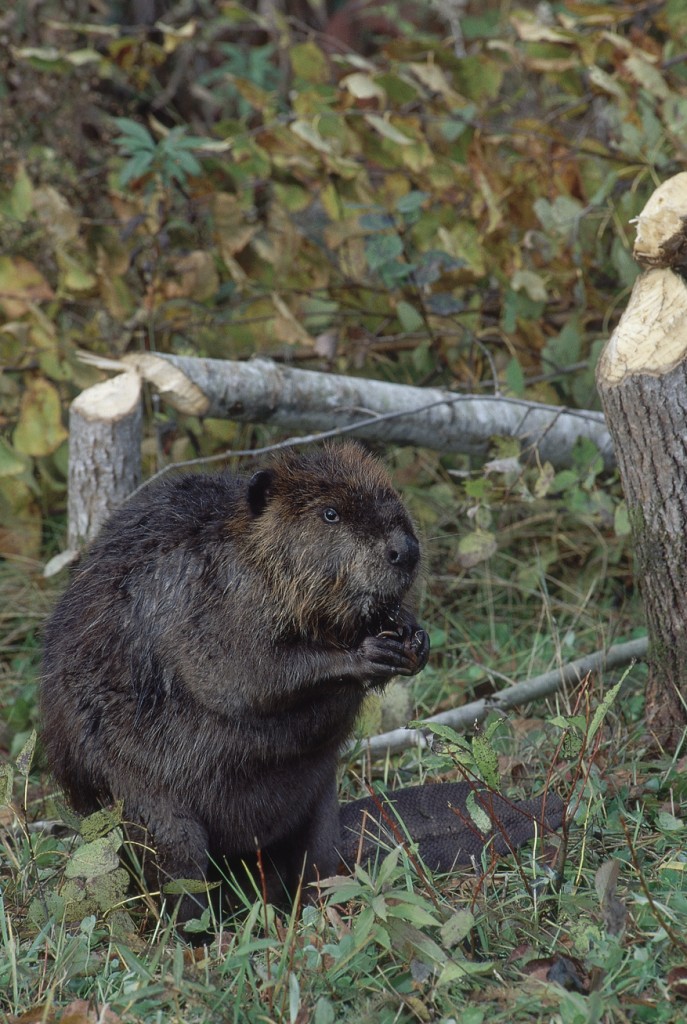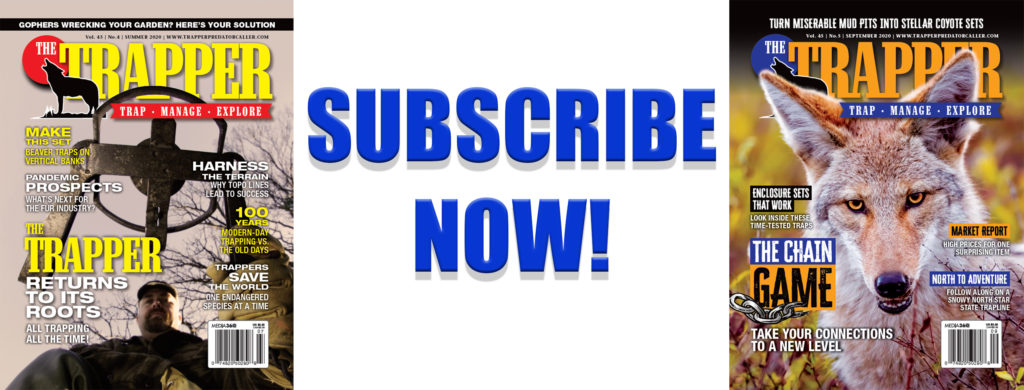By Serge Lariviére
Fall is once again upon us and most of us are busy making plans for the upcoming season. The prices of this past season have shown some improvement, although very slight, but enough to at least know what to expect for this coming season. Overall, no big changes are expected for 2024-2025, and you can almost bank the prices you received last year will be very similar to what you will receive this year. The economics of the fur industry have not changed much in the last year, and the main trends and issues remain. Russia is still at war with Ukraine, the Russian’s appetite for wild fur still impaired by the strength of their currency, as well as by the various economic sanctions imposed upon Russia by foreign countries.
Without Russians at the buying table, the market for raccoons, the number one most important of all animals, number wise, for American trappers, will remain below profitable levels, with most sections not even reaching $10 a skin, in some areas, even less. That means that many buyers may not give anything for a “green pelt,” simply because the cost of putting up the skin exceeds its market value. If you decide to go after raccoons anyway, wait until the late season to avoid blue leathers and flat skins, catch them when they are fully prime, and do your own skinning, fleshing and boarding. Even then, do not get your hopes up — nobody foresees a market increase for raccoons until the Russians get out of the war.
As was the case this past season, beaver is expected to remain at the top in terms of profitable species to trap. The hat market that uses beaver felt still leads in terms of demand and this helps move all beaver skins, regardless of size and damage, as long as the underfur is dense. This means, again, that trappers are encouraged to wait until the fur is prime before they harvest beavers on their traplines.
The hatter market has pushed beaver prices over $30 USD for large, prime pelts, and this should help many of the Northern trappers cover expenses. Catch them when they are prime, handle them well, and sell them quickly while the going is good. There is no major upswing predicted in beaver prices, but the levels we saw this past season should remain again this season. Castoreum has gone down slightly, but better grades will still bring $40 USD per pound, with exceptional castors upward of $60-$80 per pound. Castoreum is an unpredictable market and can rise or fall quickly. If the prices drop and you can store them in your freezer, do so. Demand fluctuates, but also shipping issues to China sometimes play a role in price. Regardless, castoreum adds an easy $5-$10 to any large beaver you catch — so collect and handle them well!
On the water line, otter will also remain stable at $20-$30 averages. Wild mink climbed above the $10 mark at the last international sale, but it is unknown where this will go next. After many years of selling wild mink for less than a $5 average, most trappers will be happy if this animal remains in the $10-$15 range. With the declining supply of ranch mink on the market, this could push wild mink prices up slightly. Muskrats remain tough to sell under current conditions, and a $2-$2.50 average is probably realistic for this coming season.
Canid trappers have had their glory years with high-price coyotes, but this is over. The best coyotes will be from the West and expect $25-$30 for average, whereas the coarser, darker and more odd-colored Eastern coyotes will remain in the $10-$15 range. In the East, “coyotes in the round” have little value since most skinners charge around $10 for skinning, fleshing and boarding. Red and gray foxes also remain difficult to sell with very limited markets. The best skins may fetch $15 USD, whereas averages will drop below $10 USD. Colored foxes — silver and cross — dominate the canid market with $30-$50 averages because of the wall-hanger and taxidermy markets.
Big-woods animals, such as American marten, will continue to move up. Last year, averages of $50-$65 were normal for the better sections, and this demand should increase again this year. Fisher also moved up in March 2024, with average prices of $55 for males and $65 for the silkier females. Catch martens and fishers when they are fully prime for the top results, and you should see a decent price advance for the coming season.
Canada lynx also increased, and just as most luxury pelts, this demand should remain strong. The same applies to bobcat — the most expensive fur among the animals we trap. Prices for Western bobcat pelts exceeded $500 on average in 2024, and that luxurious fur is still so fancy and in demand that prices will continue upward for this coming season. Bobcat is all about belly fur, so handle them well if you have access to those high-money cats! Last year, the top price paid at Fur Harvesters Auction was $1,500 USD for a single pelt!
Taxidermy and wall-hanging skins such as wolves, bears, badgers, wolverines, etc., all should advance in price in 2024. The demand for those skins is almost individually based, meaning that some skins may bring exceptional prices, while “ugly” animals will bring very little. Learn to recognize exceptional skins and handle them well, complete with paws and lips and complete ears for maximum price. A call to taxidermists nearby can also be a good option to explore if you want to sell your exceptional animals locally and “in the round.”
The percentage of skins sold compared to what was offered (termed clearance in the industry) was very good this past spring, suggesting that some of the demand was not met. Usually, strong clearances indicate early interest by manufacturers who failed to fulfill orders, and some of these may be more aggressive when the buying begins in early 2025.
We have been seeing movement upward in our industry overall, and although we are far from record-high prices, the prediction is good that prices will once again advance in early 2025, so make plans to get out there and catch your share of prime fur this coming fall!






